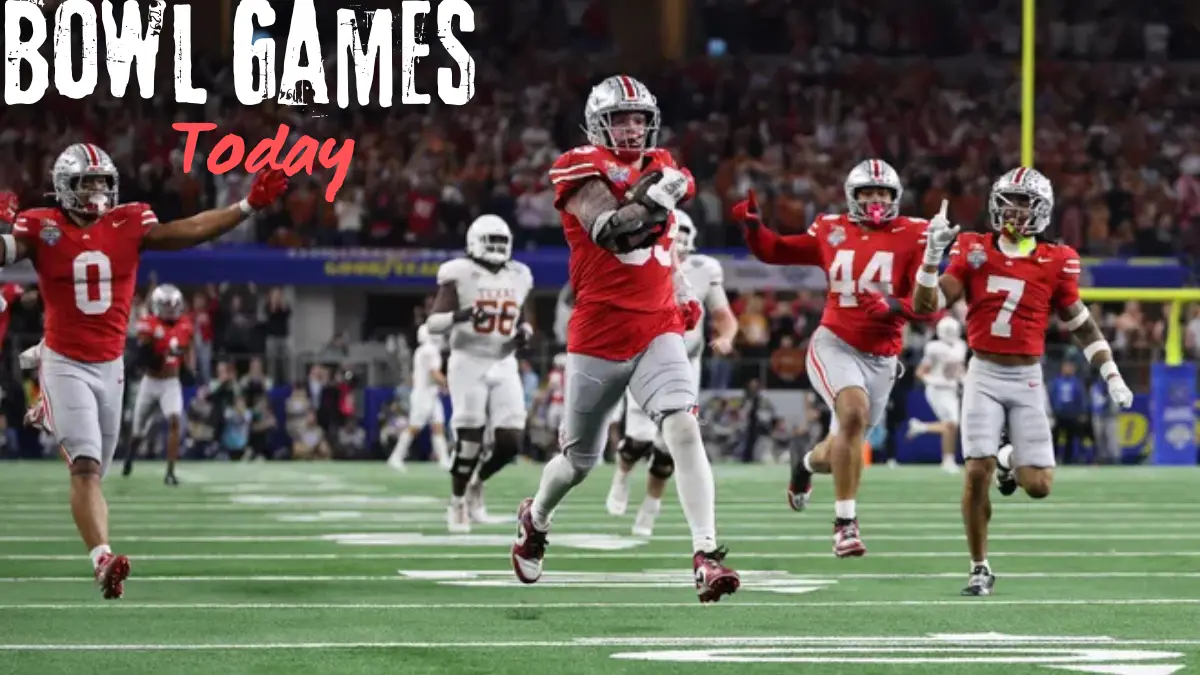Bowl Games Today hold a special place in the hearts of college football fans. These postseason events bring a thrilling conclusion to the collegiate football season, showcasing top-tier talent, fierce rivalries, and unforgettable moments. When the calendar turns to bowl season, the anticipation builds for these matchups that offer a glimpse of glory for teams and players alike.
The Origins of Bowl Games

The history of Bowl Games Today dates back to the early 20th century. The first bowl game, the Rose Bowl, was played in 1902 in Pasadena, California. Initially organized to attract tourists to the area, it quickly became a cornerstone event in college football. Over the decades, more bowl games were introduced, each carrying its unique identity and significance. These games have evolved into a grand tradition, with each contest reflecting a piece of college football’s storied past.
Bowl Games Today are often associated with pageantry, including marching bands, elaborate parades, and regional pride. They are not merely about the football; they encapsulate the spirit of celebration and camaraderie, bringing together fans from across the nation. This cultural significance has cemented bowl games as a quintessential part of the American sports landscape.
The Structure of Bowl Season
The bowl season typically begins in mid-December and culminates with the College Football Playoff National Championship in early January. During this time, dozens of Bowl Games Today take place, featuring teams from all conferences and levels of success. These games are organized into tiers, ranging from smaller bowls with lesser-known teams to marquee matchups between powerhouse programs.
Each bowl game has its criteria for team selection, often involving a combination of win-loss records, conference affiliations, and rankings. The most prestigious games, known as the New Year’s Six, include the Rose Bowl, Orange Bowl, Sugar Bowl, Cotton Bowl, Peach Bowl, and Fiesta Bowl. These games often feature the best teams in the country and serve as a lead-up to the national championship.
The Role of the College Football Playoff
Introduced in 2014, the College Football Playoff (CFP) system revolutionized the way national champions are determined. The CFP replaced the previous Bowl Championship Series (BCS), introducing a four-team playoff format. The top four teams in the country, as determined by a selection committee, compete in two semifinal games held within the New Year’s Six bowls. The winners advance to the championship game, ensuring that the title is decided on the field rather than through polls or computer rankings.
The CFP has added an extra layer of excitement to bowl season, as fans eagerly await the committee’s rankings and the subsequent matchups. The stakes are higher than ever, and the level of competition is unmatched. This playoff format has also increased the importance of the regular season, as teams must consistently perform at a high level to secure a coveted spot in the top four.
The Impact on Players and Teams
For players, Bowl Games Today represent an opportunity to showcase their skills on a national stage. Many athletes view these games as a chance to impress NFL scouts, enhancing their prospects for the professional draft. The increased visibility and high stakes of bowl games often bring out the best in players, resulting in standout performances that are remembered for years.
Teams also benefit from participating in Bowl Games Today. For programs that are not in contention for the national championship, these games offer a sense of accomplishment and a reward for a successful season. Bowl games provide additional practice time, allowing coaches to develop younger players and prepare for the future. Moreover, the exposure from bowl games can boost recruiting efforts, as prospective players are drawn to programs with a history of postseason success.
Memorable Bowl Game Moments
Bowl Games Today have produced countless iconic moments that have become etched in the annals of college football history. From dramatic comebacks to game-winning plays, these contests have delivered unforgettable drama. The “Miracle in Miami” during the 1984 Orange Bowl, where Miami defeated Nebraska by stopping a two-point conversion attempt, remains one of the most thrilling finishes in bowl history.
Another legendary moment occurred during the 2006 Rose Bowl, when Vince Young led the Texas Longhorns to a victory over USC in one of the greatest college football games ever played. The game featured future NFL stars and showcased the sheer intensity and excitement that bowl games can bring. These moments serve as a testament to the enduring appeal of Bowl Games Today and their ability to captivate fans year after year.
The Cultural Significance of Bowl Games
Beyond the gridiron, bowl games have a profound impact on the communities that host them. These events attract thousands of visitors, boosting local economies and generating significant revenue. Hotels, restaurants, and businesses benefit from the influx of fans, while the games themselves often support charitable initiatives.
Bowl Games Today also serve as a platform for celebrating traditions and regional pride. The unique themes and sponsorships associated with each game reflect the character of the host city and its culture. For example, the Rose Bowl Parade is a beloved tradition that showcases intricate floral floats and marching bands, embodying the spirit of Pasadena and Southern California.
Challenges and Controversies
While bowl games are celebrated for their tradition and entertainment value, they are not without criticism. The proliferation of Bowl Games Today has led some to question their significance, as a growing number of teams with mediocre records receive invitations. Critics argue that this dilutes the prestige of bowl season and diminishes the achievement of earning a bowl berth.
Player opt-outs have also become a contentious issue. In recent years, some star players have chosen to sit out bowl games to avoid the risk of injury and focus on preparing for the NFL Draft. This trend has sparked debates about the value of Bowl Games Today and their role in the modern college football landscape.
The Future of Bowl Games
The landscape of college football continues to evolve, and Bowl Games Today are no exception. Discussions about expanding the College Football Playoff have gained momentum, with proposals for a 12-team format gaining widespread support. Such an expansion would likely have a significant impact on the bowl system, potentially integrating more games into the playoff structure.
Technological advancements and changes in media consumption have also influenced the way fans experience bowl games. Streaming services and social media platforms have made these contests more accessible than ever, allowing fans to engage with the action in real time. As the sport adapts to these changes, Bowl Games Today are likely to remain a central part of college football’s identity.
The Joy of Bowl Season
For fans, bowl season is a time of excitement, nostalgia, and celebration. It marks the culmination of months of hard-fought battles on the field, bringing together the best teams and players for a final showcase. Whether it’s the thrill of an underdog pulling off an upset or the spectacle of two powerhouse programs going head-to-head, Bowl Games Today offer something for everyone.
As the spotlight shines on today’s bowl games, fans can revel in the rich tradition and unparalleled drama that make this season so special. These contests are more than just games; they are a celebration of the passion, dedication, and resilience that define college football. With every kickoff, tackle, and touchdown, the legacy of bowl games continues to grow, ensuring that this cherished tradition endures for generations to come.







